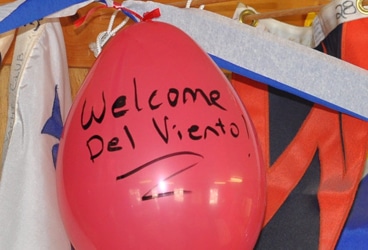
We’re at 56 degrees latitude and our internal clocks are all messed up by our northward progress. The days continue growing longer despite the passing of the summer solstice. And now that we’re in Southeast Alaska, we’re west enough that we’ve rolled back an hour earlier to Alaska Daylight Time (ADT). Longitudinally we’re now halfway between Southern California and Hawai’i.
Most of the places we visit have some kind of memorial to mariners lost at sea. These memorials range from modest to elaborate, but none I’ve seen is like the one in Prince Rupert, our last Canadian port. It’s a white fishing dory displayed in a seaside park. It was found adrift in these waters in 1987, inverted and covered in barnacles. After some research, the Prince Rupertonians learned they’d found the Kazu Maru, missing since it left Owase, Japan 18 months earlier with only Kazukio Sakamoto aboard. They were surprised again when they realised that Prince Rupert and Owase are sister cities. A group of local fishermen restored the dory before inviting the family of the lost mariner over from Japan.
The seaside park and the rest of the city are built on rolling hills high above the water with a mountainous backdrop. We wandered by the Prince Rupert courthouse, perched atop a broad hill, its Federal-style architecture out of sync with the unrestrained wildness of this part of the world. Around back we stumbled on a gem: Sunken Gardens, a manicured park, tucked two stories below street level. It’s terraced and bright with flowers along a path that leads down to a grassy area with benches and chess tables. In an amphitheater-like setting, a stunning variety of flowers and plants rose up around us to meet blue sky. This unlikely garden left us with smiles after so many miles of green of forested mountainsides.
The next morning, having enjoyed the hospitality and hot showers of the Prince Rupert Rowing and Yacht Club, and with a can of bear spray and fresh produce aboard, we cast off and headed northwest, bound for Ketchikan. While we still had phone service, Windy called U.S. Customs to let them know we were inbound and would be spending the night en route, in an unpopulated U.S. anchorage called Foggy Bay.
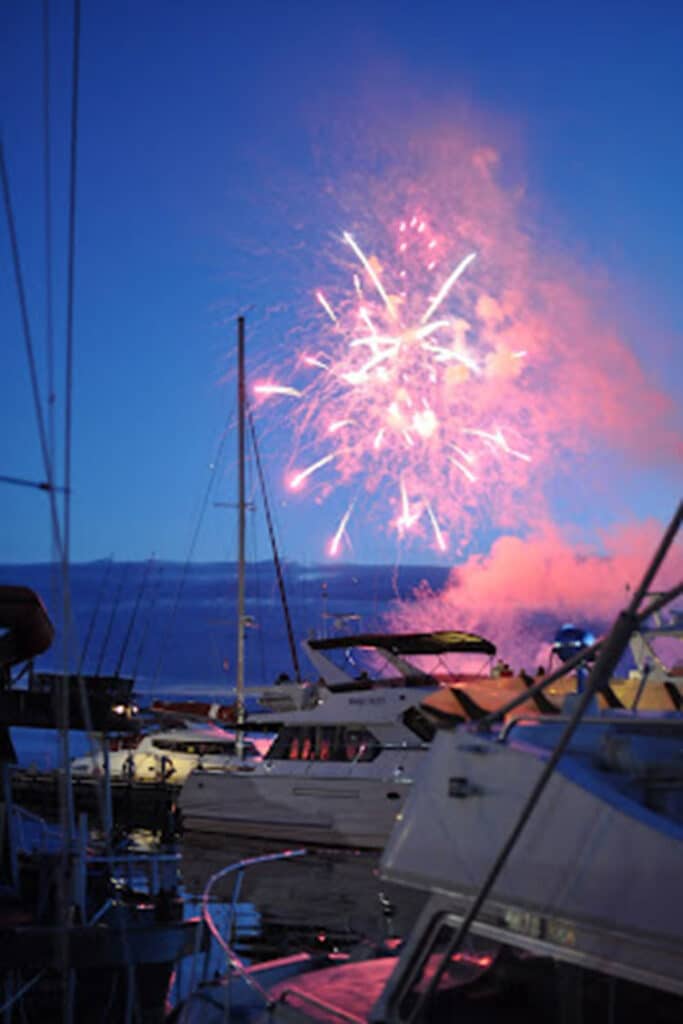
There are few days in any year when a boat can sail merrily across the Dixon Entrance, an open stretch of water that breaks up the Inside Passage, separating British Columbia from Southeast Alaska. By stroke of luck, we hit one of those days. Blue sky surrounded us and during her watch, Windy called us all topsides to welcome us to Alaska.
It would be easy to denigrate Ketchikan, our first Alaskan port. After all, it’s a remote island community with too many souvenir shops catering to too many cruise ship passengers. Beyond the tourist apron, several run-down bars are more successful than they should be. It lies at one end of the infamous Bridge to Nowhere.
By the time we settled in, the three cruise ships that towered over the city earlier that day, blocking seaward views, were gone. The shops that cater to them were promptly closed and only the town’s 8,000 residents remained on the island. We felt like guests, invited back stage after the main event, to see what real life is like.
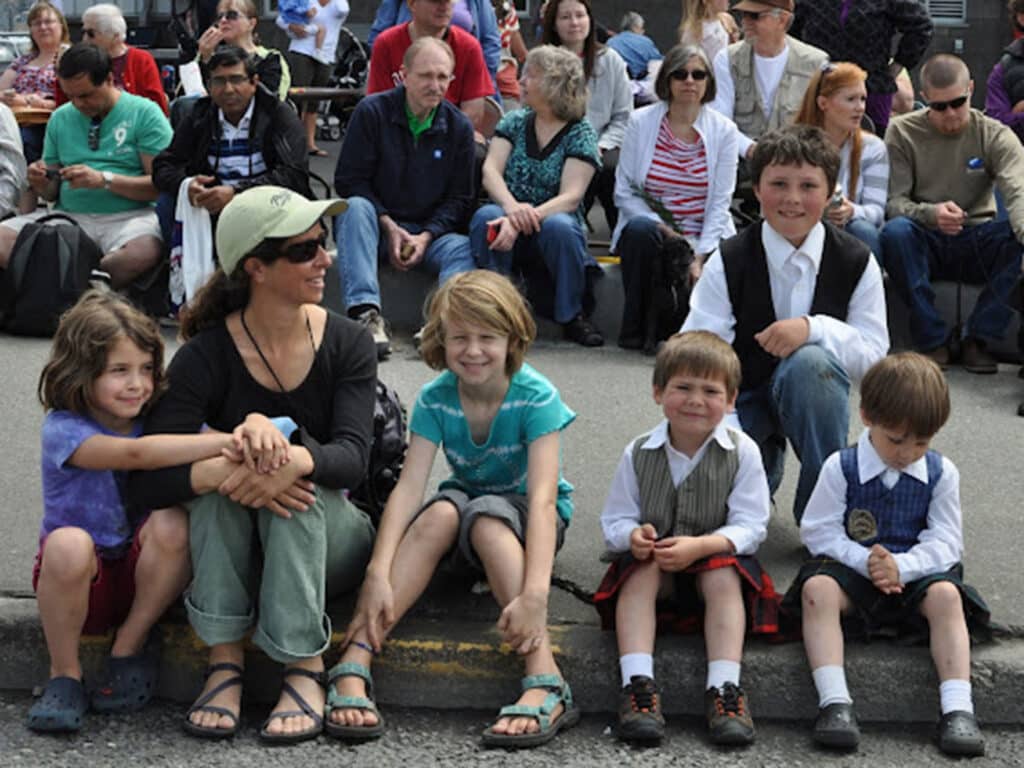
“There’s Santa Claus and Mrs. Claus,” our friend Cindi said, standing next to me along Ketchikan’s waterfront main drag. The white-haired couple waved and smiled as they crept past us in a convertible, an entry in the annual Fourth of July parade. “They’ve played the role every winter for years and years; everyone knows them.” More folks on the fire engines and floats and the beds of pick-ups called out to their friends sitting curbside, kids making mad scrambles for thrown candy. Miss Ketchikan beamed in a red dress.
Standing next to her was our friend Molly and her three boys: Michael, Gabe, and Caleb. They cheered loudly as Molly’s four girls (Addy, Annika, Katie, and Elaine) marched by in kilts, part of the children’s highland dance troupe. Molly and her husband Peter live with their seven children aboard Nadejda, their 65’ Colin Archer-designed steel ketch.
At the post-parade, dockside barbeque we met Cassie and her husband Scott and their three kids. They’re in the market for a family cruising sailboat and we tagged along with them to the town’s annual rubber duck race. Frances and their daughter Brin became fast friends and stayed up until the 11:00 p.m. fireworks playing Pet Shops, Calico Critters, and “spy team 2-2-1,” a game in which they run around spying on everything.
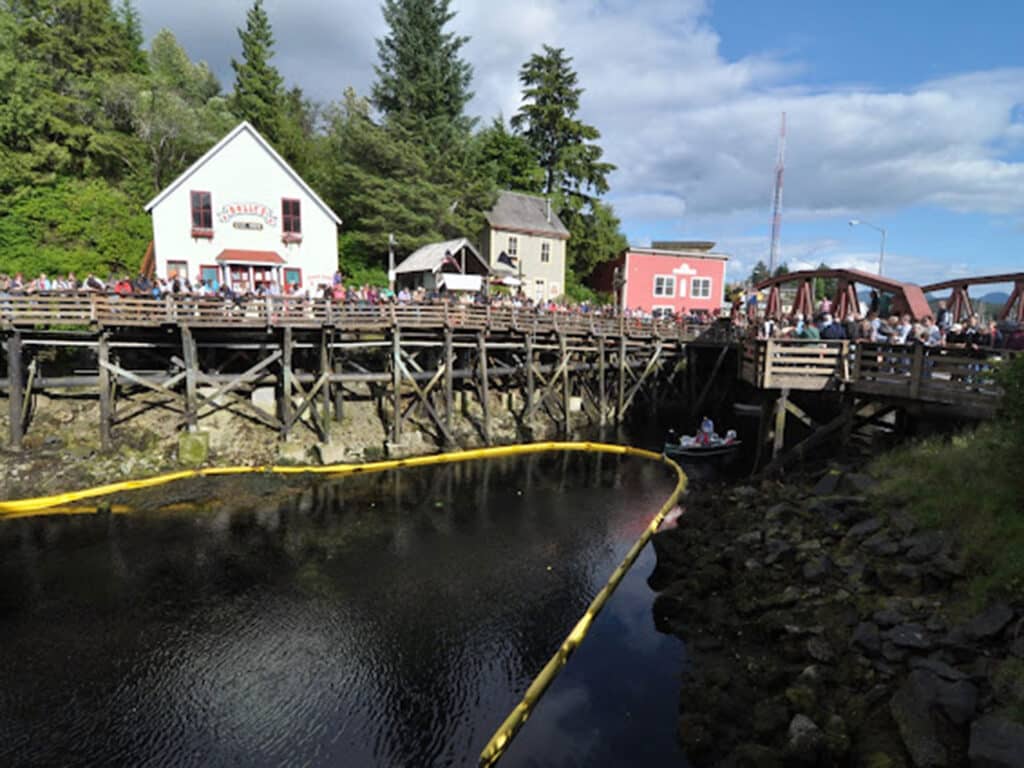
The next day we went to the library with the Nadejda clan and hiked along the Rainbird trail above the city. In the evening, Cindi and Robert drove us out to the banks of a local river where they thought we might see bears. There were no bears, but a half-dozen bald eagles perched around us, fish-spotting.
Early the next morning, the girls and I went to the local NPR-affiliate station to sit in the studio with Scott while he did his 0600-0800 classical music program. Between queuing songs on his iPod and reading the weather and local announcements, he explained to the girls and me how everything works. Finally, as he watched the clock and timed his sign-off to the second, the familiar Saturday-morning bumper music for “Weekend Edition” began playing and the voice of NPR’s Scott Simon came in crystal clear from our former Washington, D.C. home.
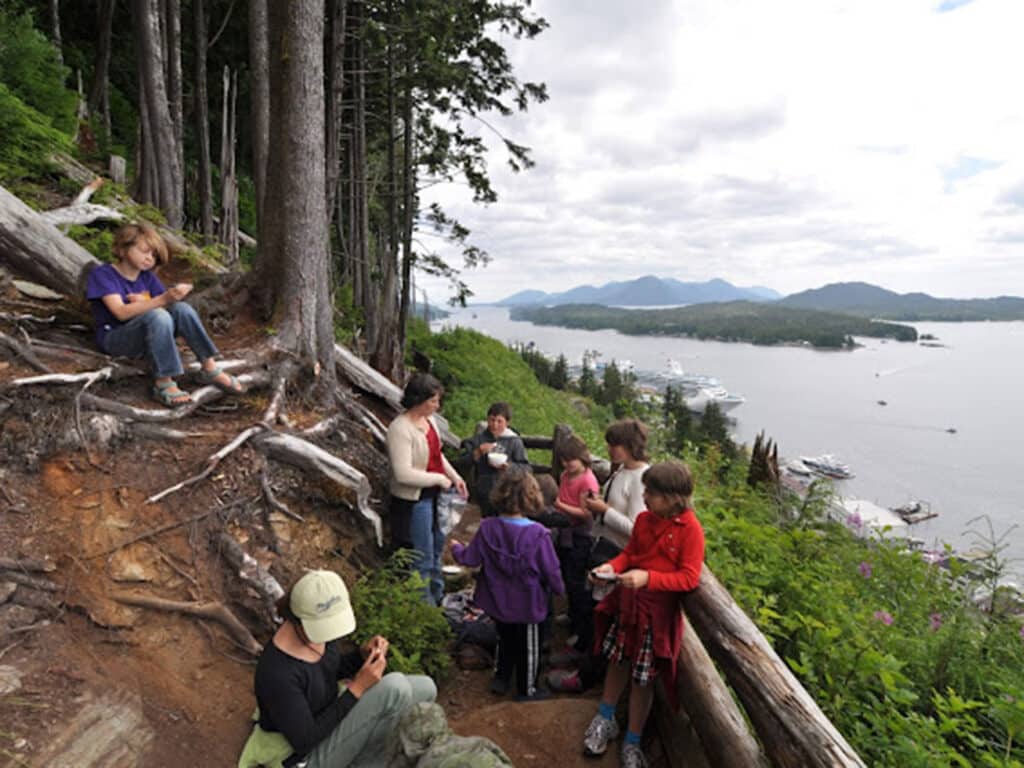
We said goodbye to our new friends and headed northwest, just as that day’s cruise ships began releasing their passengers.
I__n our twenties, we traded our boat for a house and our freedom for careers. In our thirties, we slumbered through the American dream. In our forties, we woke and traded our house for a boat and our careers for freedom. And here we are. Follow along at logofdelviento.blogspot.com.








